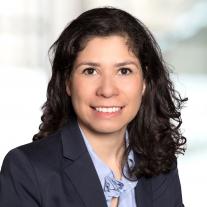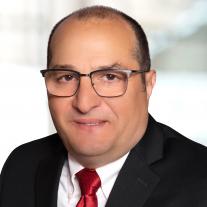NYC Façade Inspection & Safety Program
Helping owners remain in compliance on all aspects of the FISP process and the NYCDOB façade safety requirements.

Overview
Previously known as Local Law 11, the New York City Department of Buildings’ (NYCDOB) Façade Inspection Safety Program (FISP) requires that owners of buildings greater than six stories retain a professional engineer or registered architect to examine the building’s exterior walls at arms-length every five years, and file a façade report. The professional engineer or registered architect is also referred to as the Qualified Exterior Wall Inspector (QEWI).
The requirements for the examination and reporting are contained in Article 302 (Maintenance of Exterior Walls) of Title 28 of the NYC Construction Codes General Administrative Provisions. The detailed requirements of FISP are specified in Rule 1 RCNY §103-04 Periodic Inspection of Exterior Walls and Appurtenances. The overriding goal of FISP is to ensure that building façades are maintained regularly and properly, to reduce the risk of a falling-debris hazard to the public.
FISP Resources
Related FISP News
- 2/26/2024 - Construction advisory regarding certain brick façades
- 7/21/2023 - Mayor Adams Unveils new Guidelines to Allow Responsible Drone Usage in New York City
- 1/1/2022 - Rebooting NYC: An Urban Tech Agenda for the Next Administration
- 10/1/2020 - DOB Buildings Bulletin regarding use of AI for façades
- 9/1/2020 - Local Law 102: Using Drones to conduct façade inspections
- 5/14/2020 - How New York City Can Integrate Drone Technology Into a Facade Inspection & Safety Program (FISP)
2020 Amendments
Significant amendments to the FISP Rules went into effect for Cycle 9 on February 20, 2020. Highlights of these Cycle 9 amendments:
- Significant increase in the number of required close-up examination “drops” to intervals of not more than 60’ of facade fronting the public right-of-way.
- Addition of a requirement to conduct at least one probe per drop for buildings with cavity wall construction to confirm the presence and condition of wall ties. This probe requirement begins with Cycle 9 and continues for every odd-numbered cycle going forward. The Rule defines some limited exceptions.
- Increase in the minimum number of years of relevant experience required for the Qualified Exterior Wall Inspector (QEWI).
- Increase in the dollar amounts of civil penalties, and a new civil penalty for failure to correct SWARMP conditions within the stated timeframe.
- Addition of a requirement to post a Conditions Certificate in the lobby or vestibule of the building indicating the most recent FISP status of the building’s exterior walls and appurtenances.
Our multidisciplinary New York-based team has expertise in the City’s current building ordinances, including:
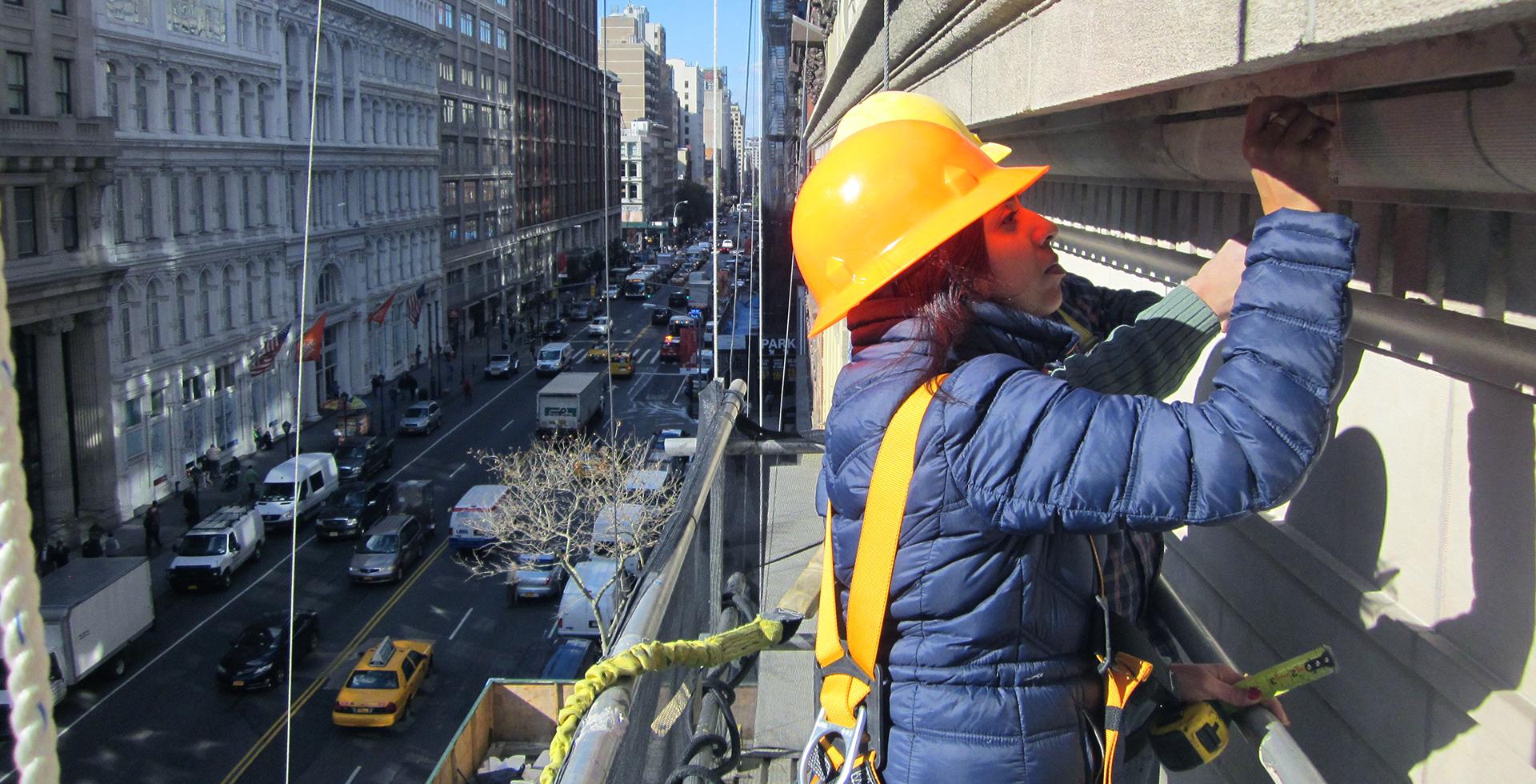
FISP Examination and Report
The FISP Critical Examination consists of visual observations of all exterior walls, with additional close-up examination of at least one representative full-height portion of a street-facing façade. The QEWI determines the necessary extent of the examination. The examination also includes all balconies, railings, fire escape stairs, and any other appurtenances on the building’s façades. The close-up examination can be performed from a suspended scaffold, house rig, boom lift, rope access or other viable means of access. The rigger would need to file a CD5 Application with the NYCDOB to permit use of a suspended scaffold.
Based on the findings of the examination, the QEWI’s Critical Examination report classifies a building’s façades into one of three categories:
SAFE: The building’s façades do not have any conditions that would cause them to be classified as SWARMP or UNSAFE. A SAFE classification means that, in the judgment of the QEWI, the building will not become UNSAFE during the next five years.
Safe With Repair and Maintenance Program (SWARMP): The building’s façades have at least one condition which, although SAFE at the time of the inspection, if not repaired within the timeframe specified by the QEWI, may deteriorate into an UNSAFE condition. If a SWARMP condition is not addressed prior to filing the next cycle’s report, it automatically becomes an UNSAFE condition in that next cycle.
UNSAFE: The building’s façades have at least one condition which is either an immediate hazard to the public or, if not repaired within 12 months, will pose a hazard to the public. If an USAFE condition is observed that is hazardous at the time of the inspection, the QEWI must notify the NYCDOB and the owner immediately using a FISP-3 (Notification of Unsafe Conditions) Form. The owner is obligated to install measures to protect the public, such as a sidewalk shed.
UNSAFE conditions are expected to be repaired within 90 days of filing the report, however a series of time extensions of up to 90 days each are usually granted by the NYCDOB if an owner is making a genuine effort to address the conditions. Requests for extensions of time are made using FISP-1 (Initial Extension of Time Request) and FISP-2 (Additional Extension of Time Request) Forms online via the DOB NOW Safety portal.
When an UNSAFE report has been filed, the NYCDOB will usually send an inspector to verify the extent of the UNSAFE conditions and confirm that adequate safety measures have been provided to protect the public. The inspector will also look at the progress of the repairs undertaken to address the conditions. Even if the measures are in-place and the work is progressing, the inspector may issue a NYCDOB violation for “failure to maintain.” If protection measures are not in-place, the NYCDOB may issue more severe penalties.
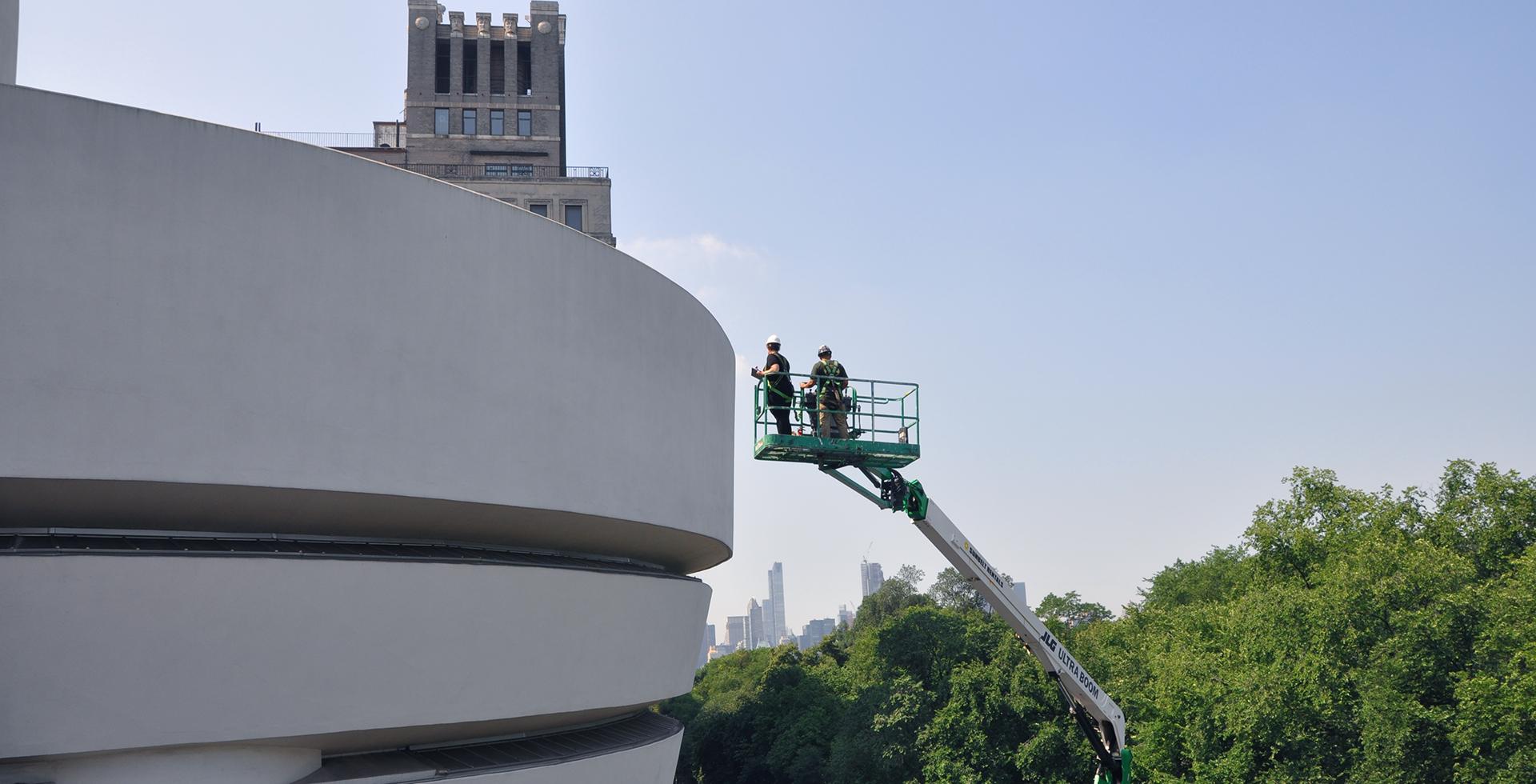
FISP Filing Timeframes
During every 5-year cycle, there are three FISP filing window sub-cycles, each a two-year duration staggered by one year. A building’s sub-cycle is assigned by the last digit of its NYCDOB Block Number.
The FISP reports are prepared and filed electronically on-line via the DOB NOW Safety portal. In-person filing of hard copies of the FISP report is no longer an option. The DOB NOW system requires that both the QEWI and Building Owner are registered in advance with NYCDOB. Note that a report must be filed within one year of performing the close-up examination and within 60 days of performing the visual examination.
The table below specify the timeframes for Cycle 9 and 10 filing.
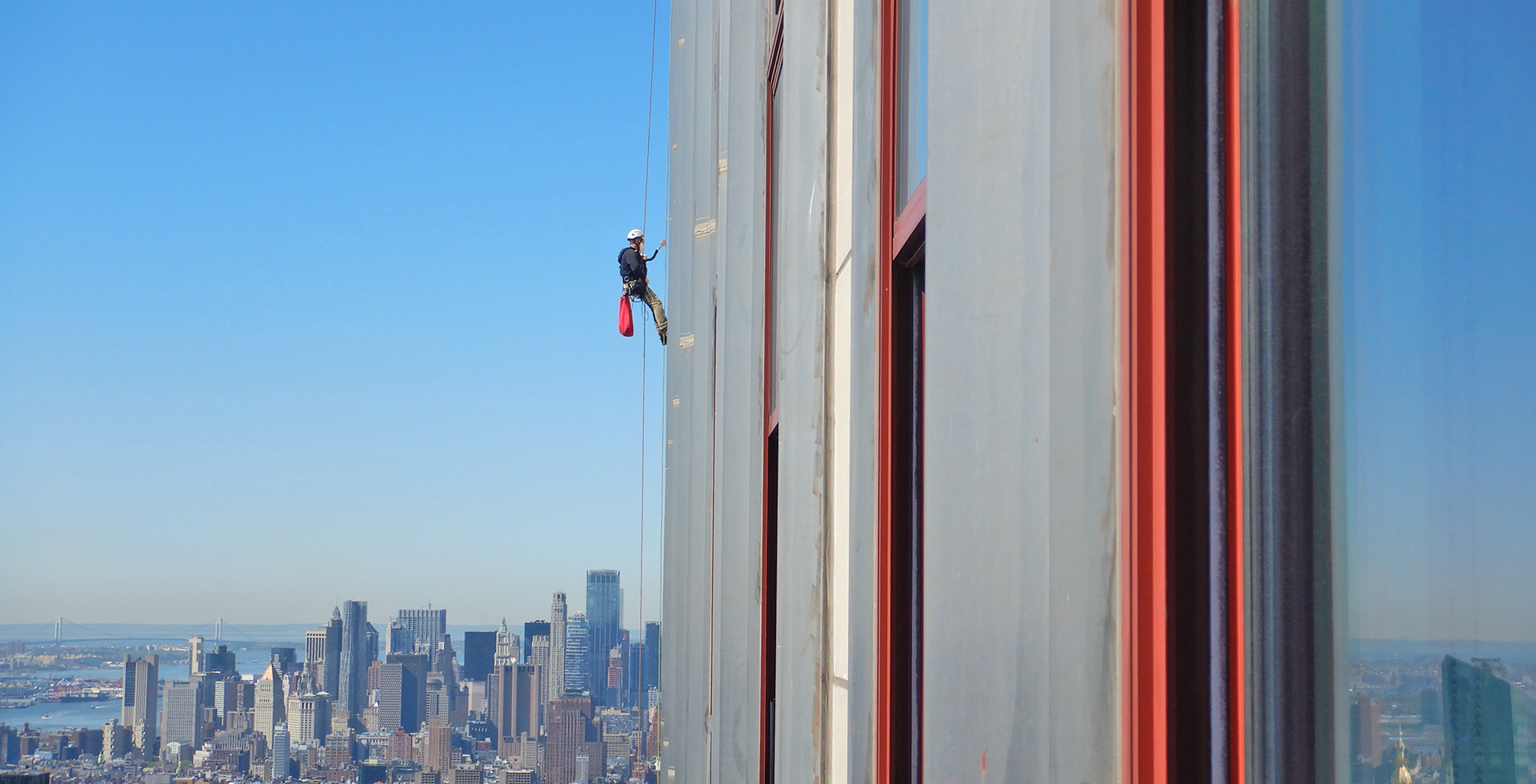
Initial FISP Filing for New Building
For a new building greater than six stories, or an alteration of an existing building that involves a vertical enlargement to a height greater than six stories, an initial Critical Examination Report must be filed in the next applicable FISP Cycle that occurs on the fifth anniversary of the first Temporary Certificate of Occupancy (TCO). If the fifth anniversary occurs during that building’s applicable sub-cycle filing window, the building must file at that time.
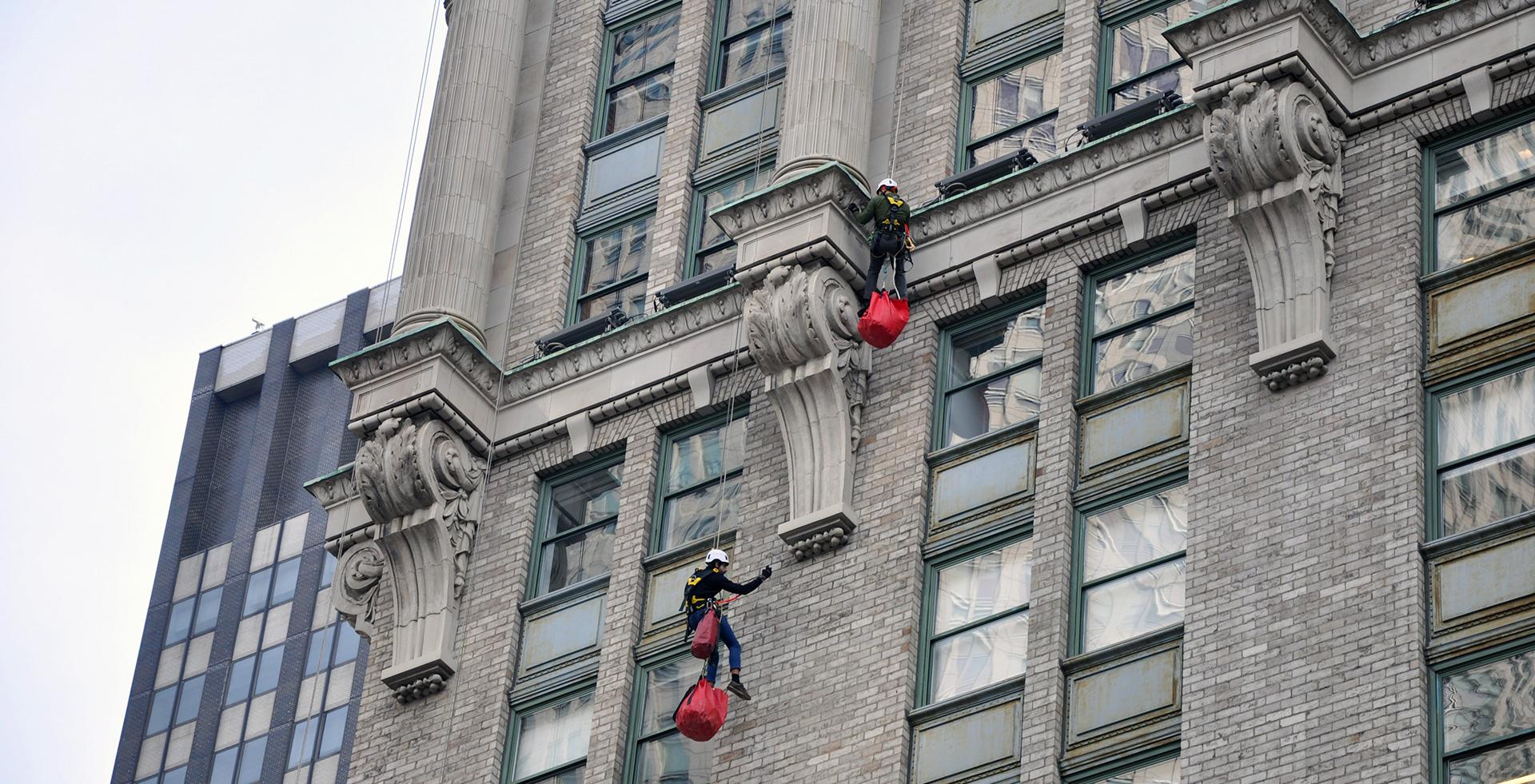
How We Can Help
Thornton Tomasetti has assisted clients for decades on all aspects of the FISP process, helping owners remain in compliance with the NYCDOB façade safety requirements. Our services include the FISP critical examination itself, along with all of the required follow-on work, including preparing contract documents for the repairs, assisting in bidding and negotiation with qualified contractors, and performing construction phase services.
Over the years, we have established an excellent working relationship with the NYCDOB and the Façades Unit, and have served as consultants on a number of efforts aimed at improving the Façade Inspection and Safety Program for all the stakeholders.
In addition, we have a strategic partnership with T2D2, an AI-driven software platform that automatically detects and classifies visible damage and deterioration on a wide variety of façade and structural materials.
Contact Us Today
To contact us with any immediate questions or request for FISP services, please complete the form below and one of our experts will contact you directly.


